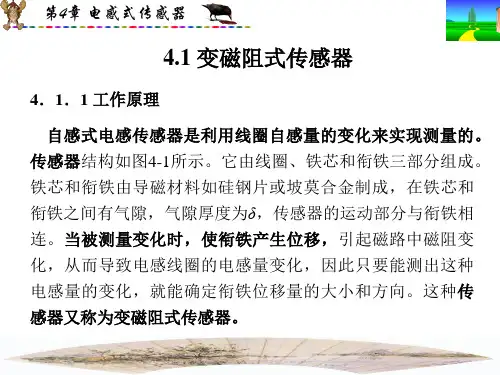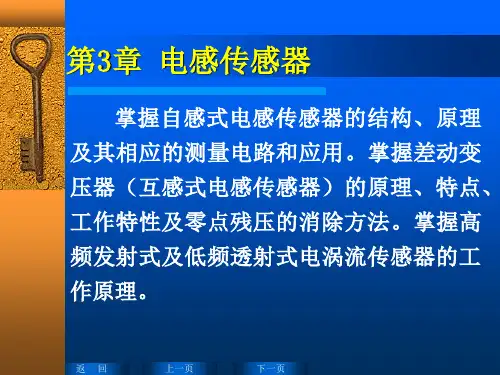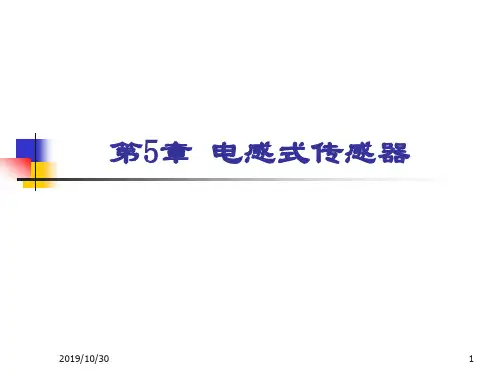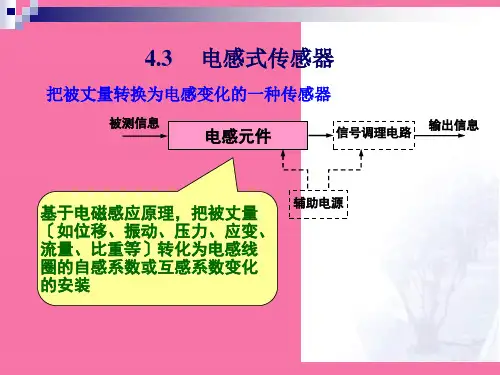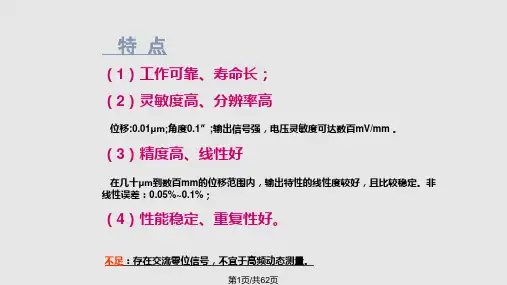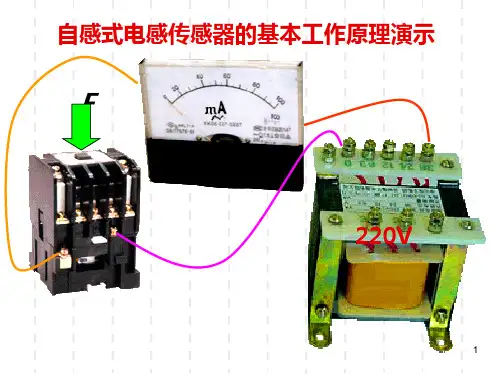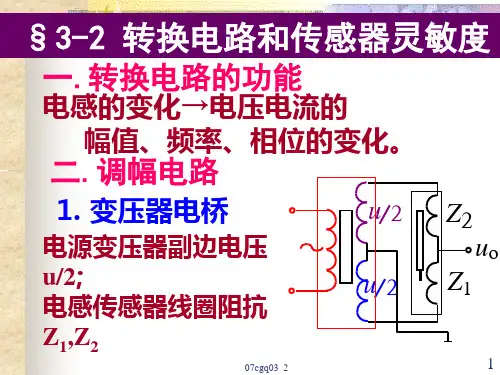影响传感器精度的因素分析 一、电源电压和频率的波动影响 二、温度变化的影响 三、非线性特性的影响 四、输出电压与电源电压之间的相位差
第28页/共62页
六、零点残余电压
零点残余电压
1—理想特性曲线 2—实际特性曲线
第29页/共62页
电感式传感器的应用
1.translational or rotary motion measurement To translational motion measurement sensors: ➢Stroke:0.1 to 200 in. ➢Resolution:infinitesimal ➢Non-linearity:1% of full scale for standard units,
第22页/共62页
若 则
被Δ L测与量被与测Δ量l c也成成正正比比,。(a)
2lc
Δlc r
实际上由于磁场强度分布 不均匀,输入量与输出量
x 线圈Ⅰ
2l 0 . H(INl )
线圈Ⅱ
之间关系非线性的。 为了提高灵敏度与线性度, 常采用差动螺管式自感传
80 . 60 . -1.2 -0.8 -0.4 40 . 2
0.02% for special units of rather long stroke ➢Sensitivity:5 to 40 V/in. To rotary motion measurement sensors: ➢Non-linearity of the order of (0.5 to 1)% of full scale
②气隙减少Δδ所引起的自感变化ΔL1与气隙增加同样Δδ 所引起的自感变化ΔL2并不相等,即ΔL1>ΔL2,其差 值随Δlδ/lδ的增加而增大。
